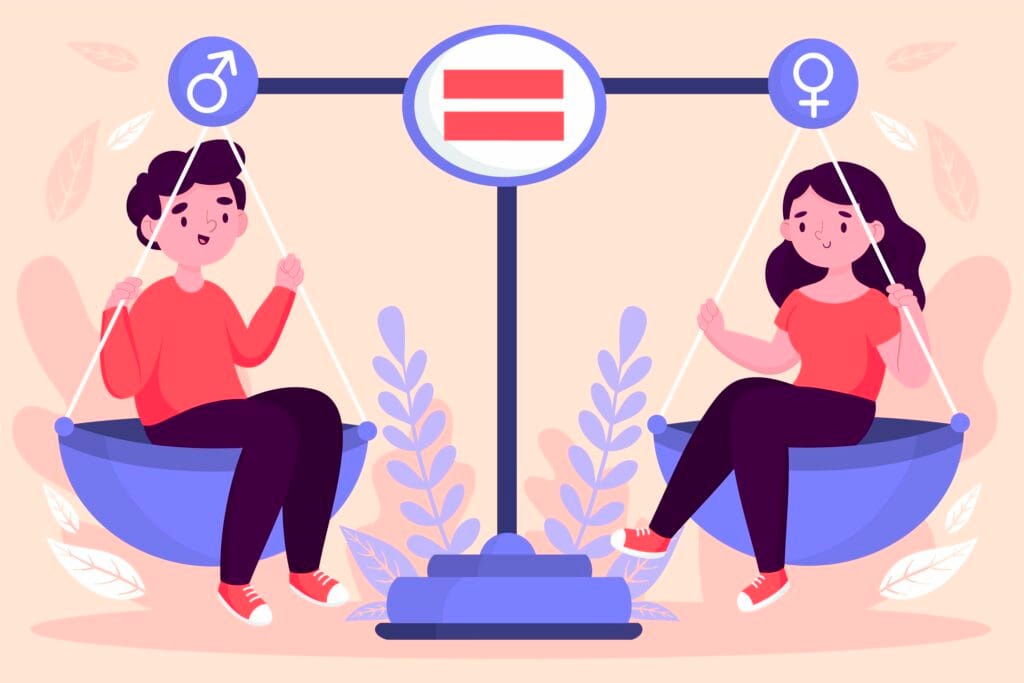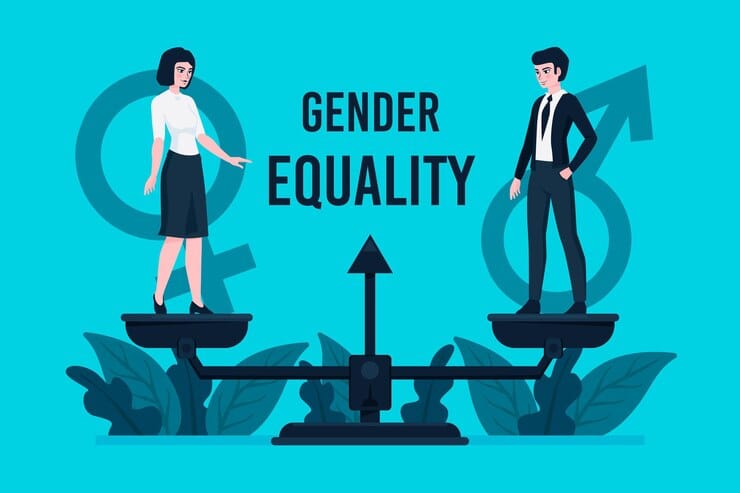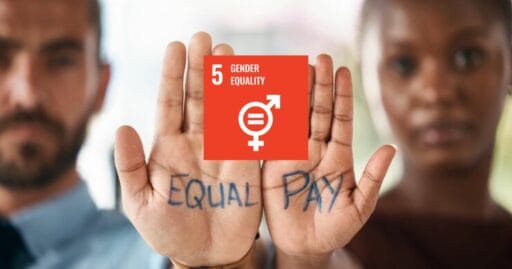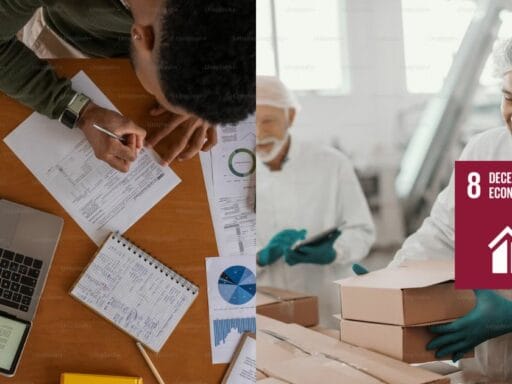Gender equality is not just a basic human right, but also a prerequisite for a peaceful, affluent, and sustainable planet. SDG 5: Gender Equality aspires to eliminate all kinds of discrimination against women and girls worldwide. Achieving this objective would guarantee that women have equal access to opportunities, resources, and rights. This would help to create a more fair and equitable society. In this blog article, we will look at the significance of SDG Goal 5, including an overview of its history, aims, and main barriers to attaining gender equality. We will also answer commonly asked questions and provide examples of successful gender equality programs. Additionally, we will explain how corporations and organizations may help achieve this worldwide objective.
History and Overview of SDG Goal 5
The path to gender equality has been long, with several milestones reached throughout the decades. The United Nations has advocated for women’s rights since its foundation in 1945. The Convention on the Elimination of All Forms of Discrimination Against Women (CEDAW), enacted in 1979, was an important step toward gender equality. However, disparities exist on a worldwide scale.
In 2015, the UN formed the 2030 Agenda for Sustainability, which includes 17 SDGs to address urgent global concerns. SDG Goal 5 aspires to achieve gender equality and empower all women and girls by 2030, giving them the same rights, opportunities, and protections as men. SDG Goal 5 aims to eliminate violence against women and promote equitable participation in leadership roles. It also seeks to ensure access to reproductive health and rights. To meet these objectives, both national and international authorities must implement gender-responsive policies and legislation.

The Importance of SDG Goal 5
Achieving SDG Goal 5 is critical for societal and economic well-being. Gender disparity impedes not just women’s advancement, but also societal progress, economic growth, and long-term development. Here are a few fundamental reasons why gender equality is important:
- Economic benefits: Gender equality increases economic productivity and growth. When women have equal access to education, employment, and leadership opportunities, they contribute to the workforce and drive innovation.
- Poverty Reduction: Empowering women, particularly in poor nations, has a cascading impact. When women are educated and financially secure, they invest in their families. This investment results in better health, education, and economic outcomes for future generations.
- Improved Health and Well-Being: When women and girls have access to healthcare, education, and social services, they may make more informed choices about their lives and futures. This minimizes maternal mortality, improves child health, and promotes a healthier society.
- Peace and Security: Societies with more gender equality are more peaceful and stable. When women participate in peace discussions and decision-making processes, more inclusive and long-term solutions are produced.
Targets and Indicators of SDG Goal 5
The United Nations has established nine targets under SDG Goal 5 to measure progress toward gender equality. These include:
- End all forms of discrimination against women and girls: Ensuring that all laws and policies are free from discrimination based on gender.
- Eliminate all forms of violence against women and girls: This includes ending domestic violence, all kind of harassments, human trafficking, and harmful practices like child marriages etc.
- Ensure full and effective participation of women in leadership: Encouraging women to take on leadership roles in political, economic, and public life.
- Ensure universal access to reproductive health: Promoting the rights of women to access family planning services, maternity care, and education on personal health.
- Recognize and value unpaid care and domestic work: Developing policies to promote shared responsibility within households and offering social protection to caregivers.
Case Studies: Successful Implementation
Case Study 1: IKEA’s Gender Equality Initiative
IKEA, a worldwide retail company, has been a pioneer in encouraging gender equality in the workplace. The corporation launched the “Women Empowerment Program,” which seeks to boost the number of women in senior positions within the organization. IKEA has effectively boosted female leadership presence by providing training programs and mentorship opportunities. The company also has a clear policy on equal pay and professional promotion. Women now account for more than 50% of IKEA’s leadership roles, leading to a more diverse and inclusive workplace.
Case Study 2: Rwanda’s Women in Politics
Rwanda is one of the countries with the highest levels of woman representation in politics. The country has made great progress toward gender equality, with women representing more than 60% of the national parliament. This exceptional success is the consequence of gender-sensitive legislation, quotas, and attempts to increase women’s political engagement. Rwanda’s progress toward gender equality has benefited social development. Women have played an important part in post-genocide reconstruction efforts and contributed to the country’s economic prosperity.

Challenges in Achieving SDG Goal 5
Despite progress, substantial hurdles remain in achieving SDG Goal 5: Gender Equality. These challenges include:
- Cultural norms and traditions: In many nations, conventional gender roles and cultural practices continue to limit women’s access to school, work, and political engagement.
- Gender-based abuse: Violence against women, including as domestic abuse, harassment, and human trafficking, is still prevalent, making it harder for women to engage fully in society.
- Access to Education and Employment: In many developing nations, girls continue to encounter educational challenges, and women are underrepresented in the labor market owing to prejudice and a lack of resources.
- Access to Education and Employment: In many developing nations, girls continue to encounter educational challenges, and women are underrepresented in the labor market owing to prejudice and a lack of resources.
- Legal and policy gaps: In certain areas, there are insufficient legal frameworks to guarantee women’s rights, and enforcement of existing laws is sometimes lax.
- Economic Inequality: Women continue to earn less than males for the same labor, and they are overrepresented in low-wage, informal occupations that lack social protection.
FAQs
🤔 What is SDG Goal 5?
Answer: SDG Goal 5 focuses on achieving gender equality and empowering all women and girls by eliminating discrimination and promoting equal opportunities in all areas of life.
🤔 Why is gender equality important?
Answer: Gender equality is crucial for economic growth, poverty reduction, and social stability. It ensures that women can contribute fully to society and make informed decisions about their lives.
🤔 What are the targets of SDG Goal 5?
Answer: The targets of SDG Goal 5 include ending discrimination, eliminating violence against women, ensuring equal participation in leadership, and promoting access to healthcare and education.
🤔 How can businesses contribute to SDG Goal 5?
Answer: Businesses can promote gender equality by implementing equal pay policies, supporting women in leadership roles, and creating a safe, inclusive work environment free from discrimination and harassment.
🤔 What are the key challenges to achieving SDG Goal 5?
Answer: The main challenges include cultural norms, gender-based violence, lack of access to education and employment, and gaps in legal and policy protections.
Conclusion
Achieving SDG Goal 5: Gender Equality is critical to building a more fair and equal society. While great progress has been accomplished, more remains to be done. Governments, corporations, and civil society must continue to collaborate, develop gender-sensitive policies, and remove the barriers to gender equality. We can work together to build a society in which women and girls have equal rights, opportunities, and protections as men, resulting in a brighter, more sustainable future for everyone.








